Waltham, MA, USA - February 04, 2015 - Electronically scanned radar, 360 view and a ramped-up range boost legendary defense system. The improvements aim to keep Patriot far ahead of 21st-century airborne threats such as growing arsenals of cruise missiles, ballistic missiles and unmanned air vehicles, or UAVs. The radar improves upon the older "space-fed" system, in which a single transmitter generates a large amount of power and pushes it through a transmitting array. The array then acts like a lens and focuses the energy into the battlefield. The AESA radar, by contrast, has multiple, individually powered transmitters behind each element of the radar - a design that allows better control of the beam and helps the radar track multiple targets simultaneously.
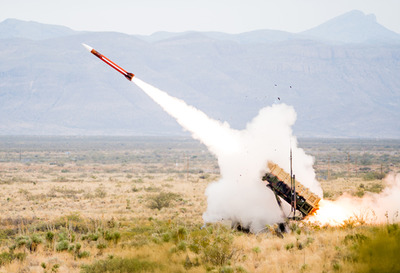 |
|
The combat-proven Patriot is the world's most advanced air and missile defense system.
Courtesy of Raytheon |
| |
Waltham, MA, USA - February 04, 2015
• Electronically scanned radar, 360 view and a ramped-up range boost legendary defense system
The view from the hill at Raytheon’s radar-testing field in Pelham, New Hampshire, is impressive, with a New England sky and rolling forests that seem to stretch forever.
But the vistas are even better for the olive-green machine that stares skyward from atop that hill. It is the first iteration of a missile defense radar with active electronically scanned array technology - an upgrade that allows better focusing of the beam, wider peripheral vision and less maintenance downtime.
New panels mounted on the back will enable a 360-degree view.
The improvements aim to keep Patriot far ahead of 21st-century airborne threats such as growing arsenals of cruise missiles, ballistic missiles and unmanned air vehicles, or UAVs.
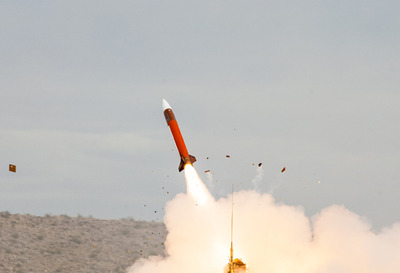 |
|
Modernized Patriot will be in service through 2040 and beyond.
Courtesy of Raytheon |
| |
“You’ve got a lot of bad guys out there making lots of missiles and UAVs, and you need stuff that can counteract those,” said Norm Cantin, who led the upgrade effort.
“We call it overmatching… you always have to stay ahead of the bad guys."
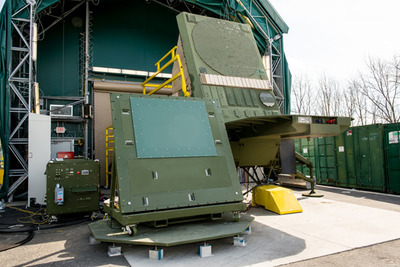 |
|
A new, active electronically scanned array radar (left) peers skyward at a test range in Pelham, New Hampshire.
Courtesy of Raytheon
|
| |
The radar improves upon the older "space-fed" system, in which a single transmitter generates a large amount of power and pushes it through a transmitting array.
The array then acts like a lens and focuses the energy into the battlefield.
The AESA radar, by contrast, has multiple, individually powered transmitters behind each element of the radar - a design that allows better control of the beam and helps the radar track multiple targets simultaneously.
Another key component of the upgrade is gallium nitride, a semiconductor substance that amplifies high-powered radio frequency signals at microwave frequencies.
Gallium nitride, commonly called GaN, enables Raytheon to outfit systems with smaller antennas, providing flexibility, greater transportability and lower operations and maintenance costs.
Improving the radar will buy warfighters valuable time to react to threats, and will allow them to take full advantage of modern missile interceptors and their increased range.
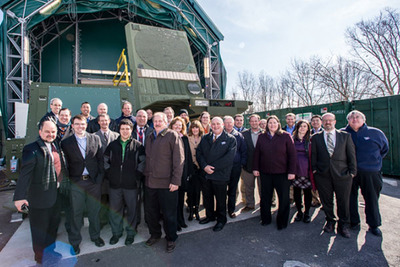 |
|
A team of Raytheon employees spent months working to develop the radar and demonstrate the technology.
Courtesy of Raytheon |
| |
“You want the radar to look far enough so that missile can get there and intercept a target farther out,” Cantin said.
“It’ll help improve the defended area.”
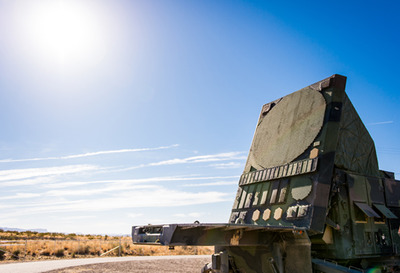 |
|
A Patriot air and missile defense radar on location at McGregor Range in White Sands, New Mexico.
Courtesy of Raytheon
|
| |
More than 20 Raytheon employees put in long hours and weekends to develop the radar.
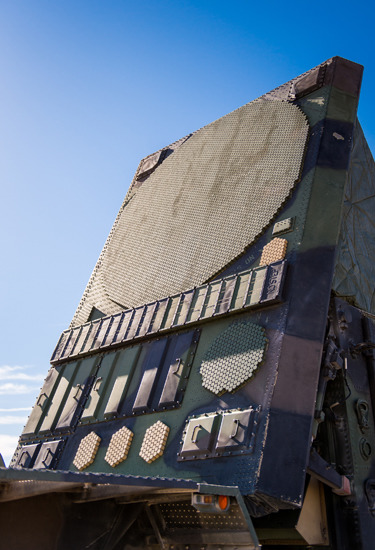 |
|
A Patriot air and missile defense radar on location at McGregor Range in White Sands, New Mexico.
Courtesy of Raytheon
|
| |
“It’s all about the warfighter and being able to get them a system that is as good as we can get it,” said Sarah Kenney, who along with Vincent Delgaudio helped lead Raytheon’s demonstrations to the military.
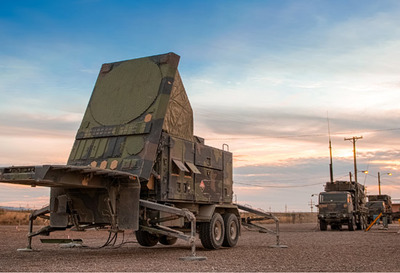 |
|
Patriot back dropped by a New Mexico sunrise at McGregor Range.
Courtesy of Raytheon |
| |
Kenney knows some of Patriot’s customers personally, even spending a year in the United Arab Emirates as U.S. soldiers trained local military to use the system.
UAE is among 13 countries that rely on Patriot for air and missile defense.
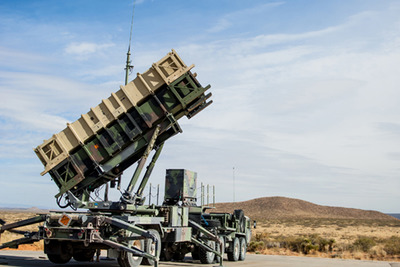 |
|
With more than 200 fire units fielded worldwide, Patriot is the system of choice for 12 nations around the globe.
Courtesy of Raytheon |
| |
“Getting to see the hardware – not just in a factory setting, getting to see what it does when it’s deployed – it gives you a real appreciation for the system,” she said.
“It really does save lives.”
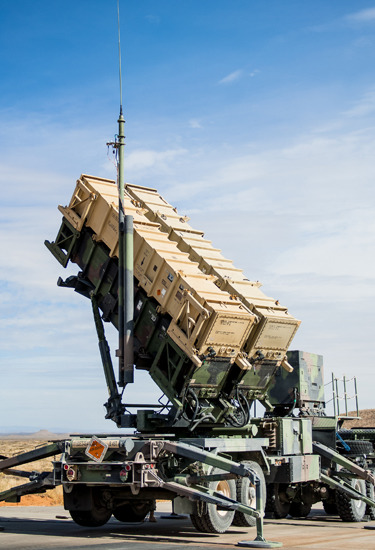 |
|
More than 2,500 target search and track tests have been performed.
Courtesy of Raytheon
|
| |
Developing the new radar required long overnight hours for some members of the team.
They could work only when the system was turned on, and they found it most efficient to keep Patriot powered up rather than rebooting every morning.
That meant making sacrifices – one engineer even gave up time at home with a newborn – but it was worth it, said Kevin O’Donnell, whose team designed the array and made sure its new parts worked together.
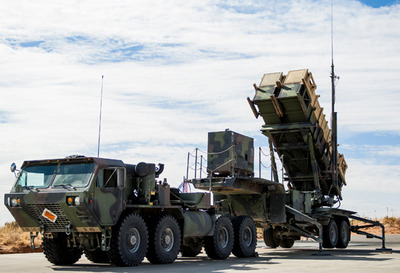 |
|
With more than 200 fire units fielded worldwide, Patriot is a system of choice for 12 nations around the globe.
Courtesy of Raytheon |
| |
“We had some new technology in this array, and some of the things that hadn’t been done before,” O’Donnell said.
“There’s a sense of pride there, being able to say you did that.”
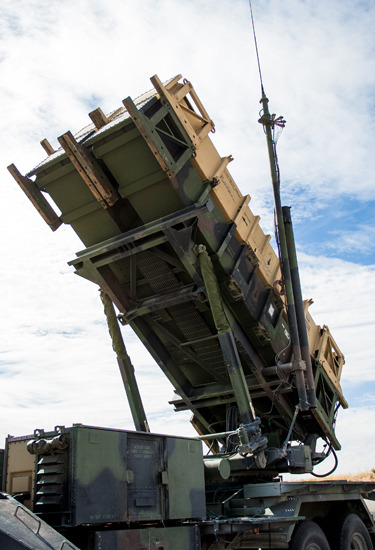 |
|
Patriot provides the warfighter a reliable and lethal capability to defeat advanced threats, including aircraft, tactical ballistic missiles, cruise missiles and UAVs.
Courtesy of Raytheon |
| |
SOURCE Raytheon Company
http://www.raytheon.com/news/feature/patriot_aesa.html
ASTROMAN Magazine - 2015.01.03
First U.S. Army missile-fighting radar blimp airborne on East Coast
http://www.astroman.com.pl/index.php?mod=magazine&a=read&id=1854
ASTROMAN Magazine - 2014.12.13
Raytheon AMRAAM and NASAMS showcased in Thor's Hammer exercise
http://www.astroman.com.pl/index.php?mod=magazine&a=read&id=1845
ASTROMAN Magazine - 2014.11.08
Raytheon acquires special operations and cybersecurity firm Blackbird Technologies for USD 420 million
http://www.astroman.com.pl/index.php?mod=magazine&a=read&id=1822
ASTROMAN Magazine - 2014.09.27
Raytheon awarded $251 million Tomahawk missile contract
http://www.astroman.com.pl/index.php?mod=magazine&a=read&id=1798
ASTROMAN Magazine – 2014.07.29
Poland's TELDAT signs Letter of Intent with Raytheon
http://www.astroman.com.pl/index.php?mod=magazine&a=read&id=1765
ASTROMAN Magazine - 2014.06.19
Poland's Bumar Elektronika and Raytheon Partner to Develop New Patriot IFF Antenna
http://www.astroman.com.pl/index.php?mod=magazine&a=read&id=1735
ASTROMAN Magazine - 2014.05.17
Raytheon welcomes new CEO Thomas A. Kennedy and discuss his vision for Raytheon and industry
http://www.astroman.com.pl/index.php?mod=magazine&a=read&id=1713
ASTROMAN Magazine - 2014.01.20
Thomas Kennedy will succeed William Swanson as the Chief Executive Officer of Raytheon Company
http://www.astroman.com.pl/index.php?mod=magazine&a=read&id=1643
ASTROMAN Magazine - 2011.12.18
Raytheon Awarded $685.7 Million for New Patriot Systems for Taiwan
http://www.astroman.com.pl/index.php?mod=magazine&a=read&id=1124
ASTROMAN Magazine - 2011.03.26
Raytheon Completes Upgrade Third Early Warning Radar
http://www.astroman.com.pl/index.php?mod=magazine&a=read&id=928
ASTROMAN Magazine - 2010.11.13
Raytheon Expands Cybersecurity Portfolio with Acquisition of Trusted Computer Solutions
http://www.astroman.com.pl/index.php?mod=magazine&a=read&id=843
ASTROMAN Magazine - 2010.03.05
Raytheon Names William F. Kiczuk Vice President, CTO
http://www.astroman.com.pl/index.php?mod=magazine&a=read&id=673
Editor-in-Chief of ASTROMAN magazine: Roman Wojtala, PhD.
|

